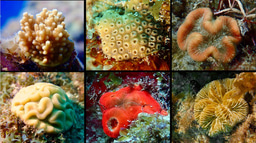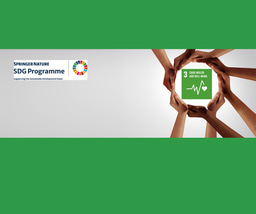
An emerging direction to design mechanical metamaterials for new functionalities and complex behavior is in the application of origami. The special property of origami to rigidly fold into almost any shape, renders the application to metamaterials a conceptually promising direction allowing for novel applications across many scientific and engineering domains. The ability to generate origami using advanced computational methods could drastically improve the applicability of origami for metamaterial design by increasing the range of viable solutions or to find alternative configurations beyond the handful of well-described origami patterns.
In our work, we present a computational approach for the design of origami mechanisms and tessellations of arbitrary size and complexity. By using the generalized conditions for rigid foldability of degree-n vertices and graph-grammar based formalisms to describe an origami, we are able to computationally construct origami with quadrilateral facets, generic three-dimensional panel-hinge assemblages, and their tessellations (Fig. 1). To that end, we introduce four algorithmic operations, involving expansion, quadrilateral-closing, translating, mirroring, and gluing. The operations are intercompatible and are used here to define the more complicated layer adding, extruding, and tessellation procedures, which are then applied to expediently generate various origami structures of considerable complexity.
 Fig. 1 Stacked square twist pattern. a Prototype of stacked square twist pattern with its highlighted graph-based formalization. b Simulation of the structure shown in a (the prototype corresponds only to a part (approx. 1/4) of the structure). c Prototype of stacked square twist pattern during testing. All sub-figures (a, b, c) and their elements are available either in the paper or in the corresponding Supplementary Information.
Fig. 1 Stacked square twist pattern. a Prototype of stacked square twist pattern with its highlighted graph-based formalization. b Simulation of the structure shown in a (the prototype corresponds only to a part (approx. 1/4) of the structure). c Prototype of stacked square twist pattern during testing. All sub-figures (a, b, c) and their elements are available either in the paper or in the corresponding Supplementary Information.
Further work will involve the development of computational methods for combinatorial search of multiple degrees of freedom origami configuration spaces, introduction of more realistic mechanical behavior, and computational design of origami-based reconfigurable structures.
For more information, please read our paper.
Follow the Topic
-
Communications Materials

A selective open access journal from Nature Portfolio publishing high-quality research, reviews and commentary in all areas of materials science.
Related Collections
With Collections, you can get published faster and increase your visibility.
Advanced characterizations of high-entropy materials
Publishing Model: Open Access
Deadline: Dec 31, 2025
Multifunctional hydrogels
Publishing Model: Open Access
Deadline: Feb 28, 2026





Please sign in or register for FREE
If you are a registered user on Research Communities by Springer Nature, please sign in